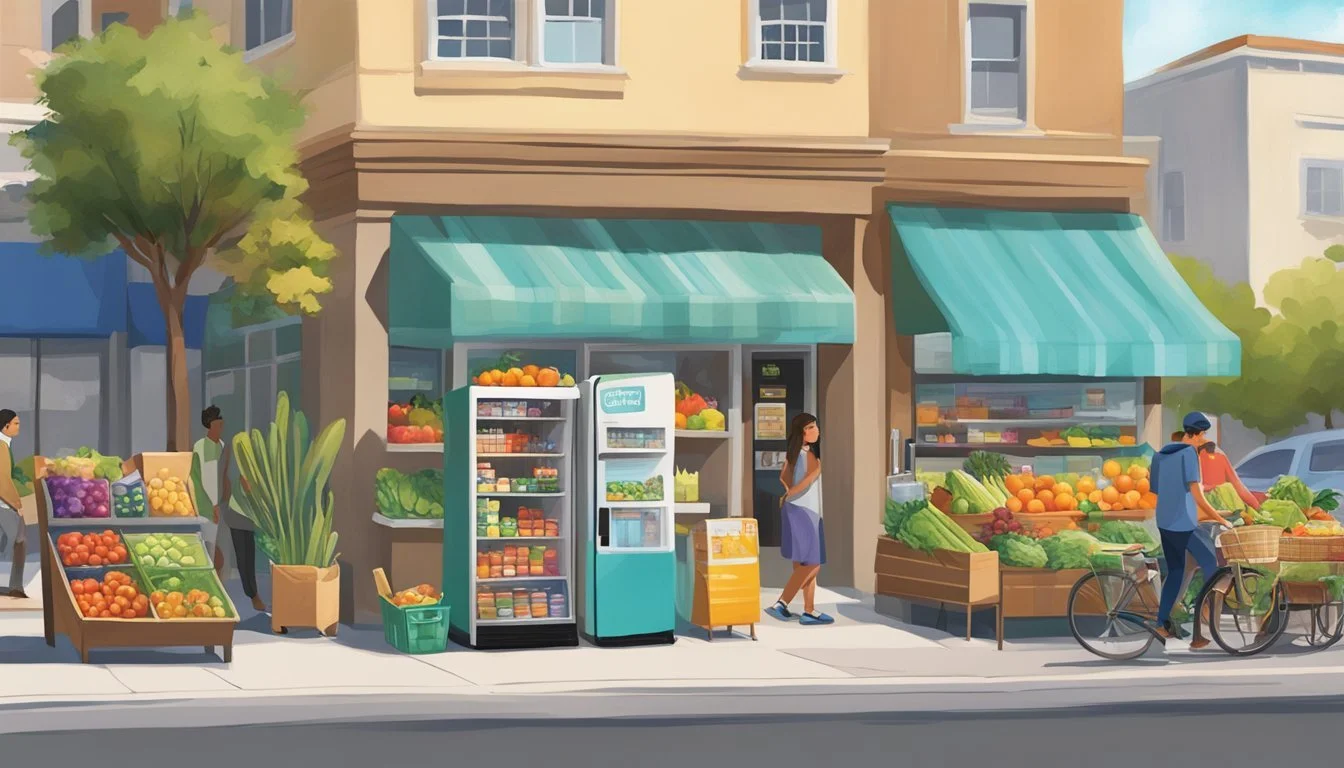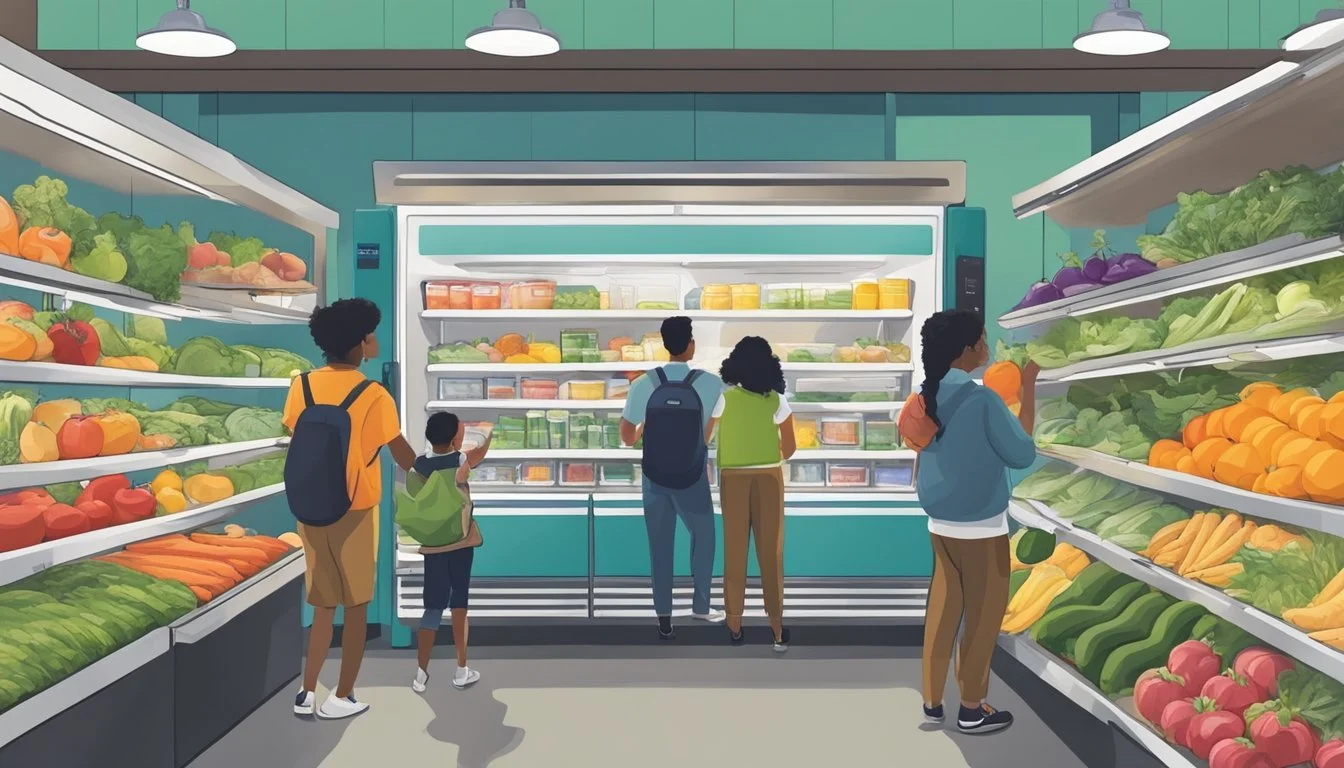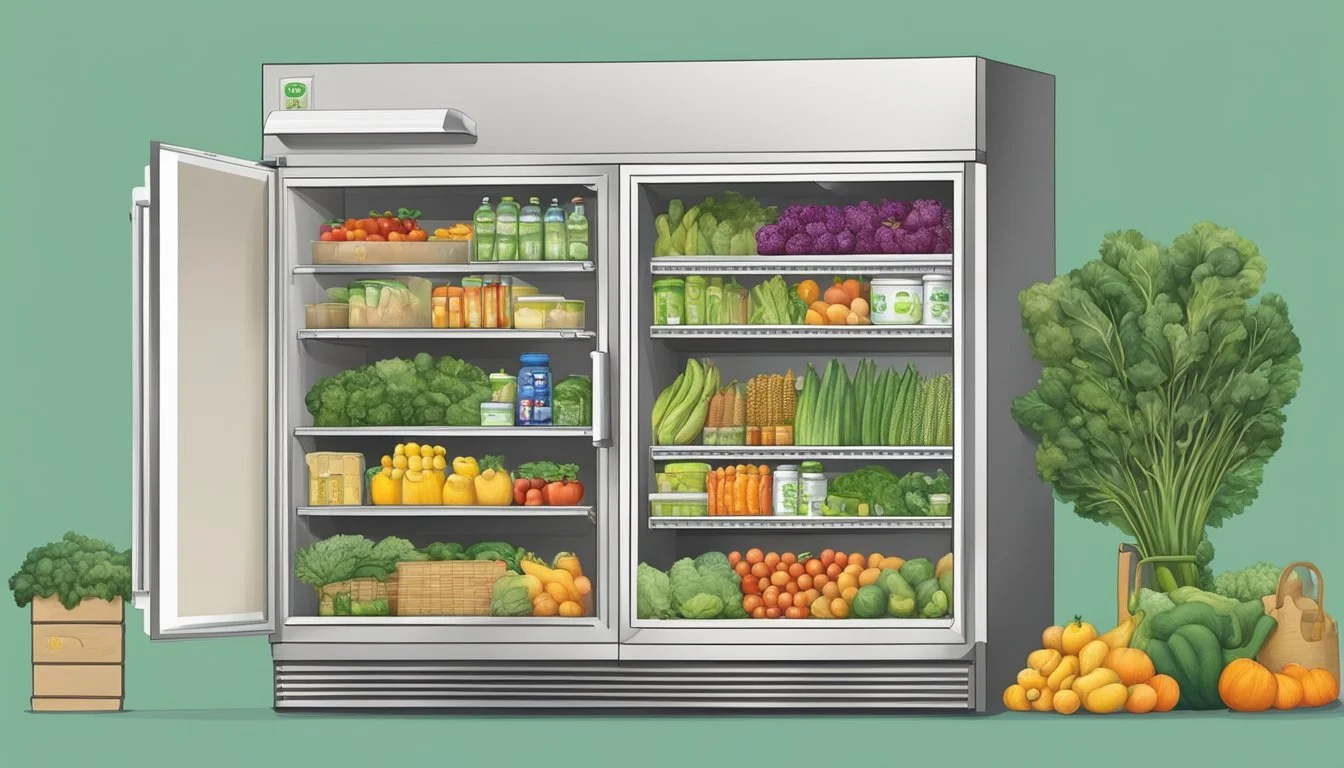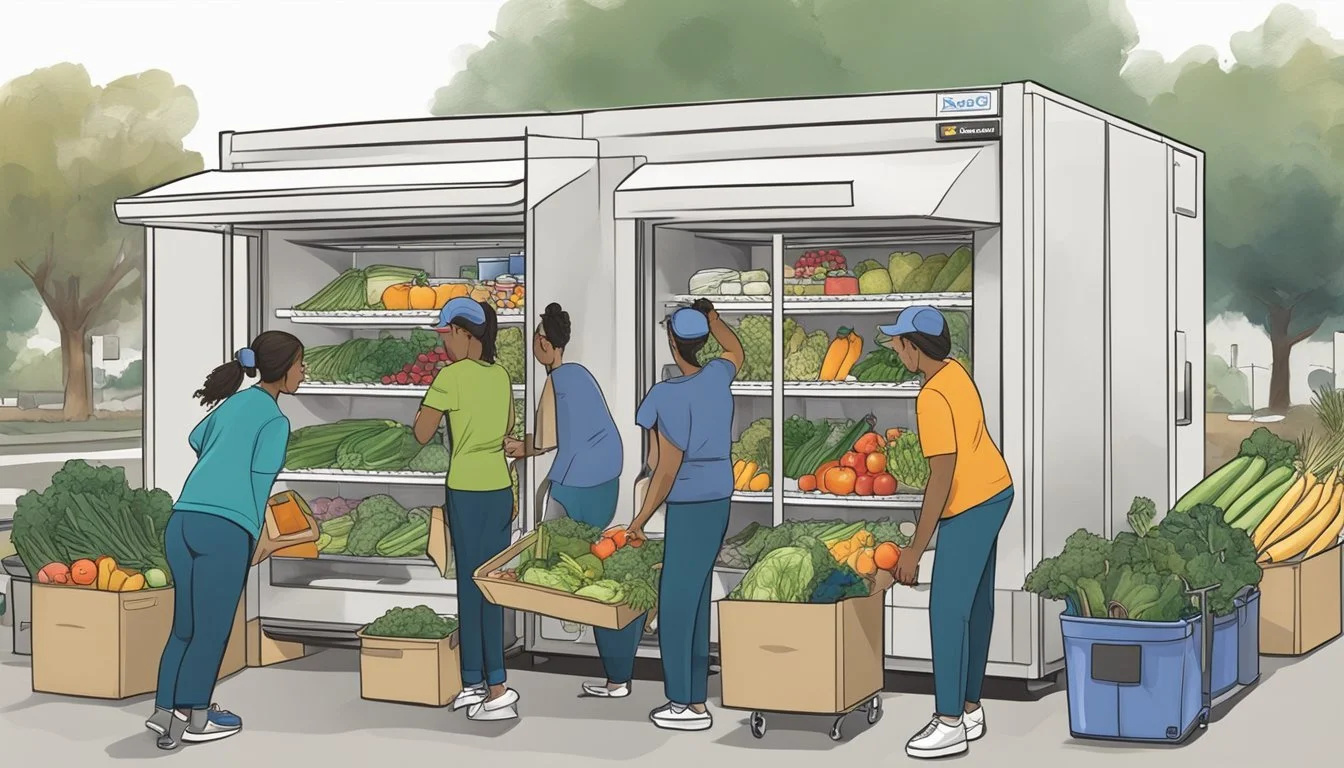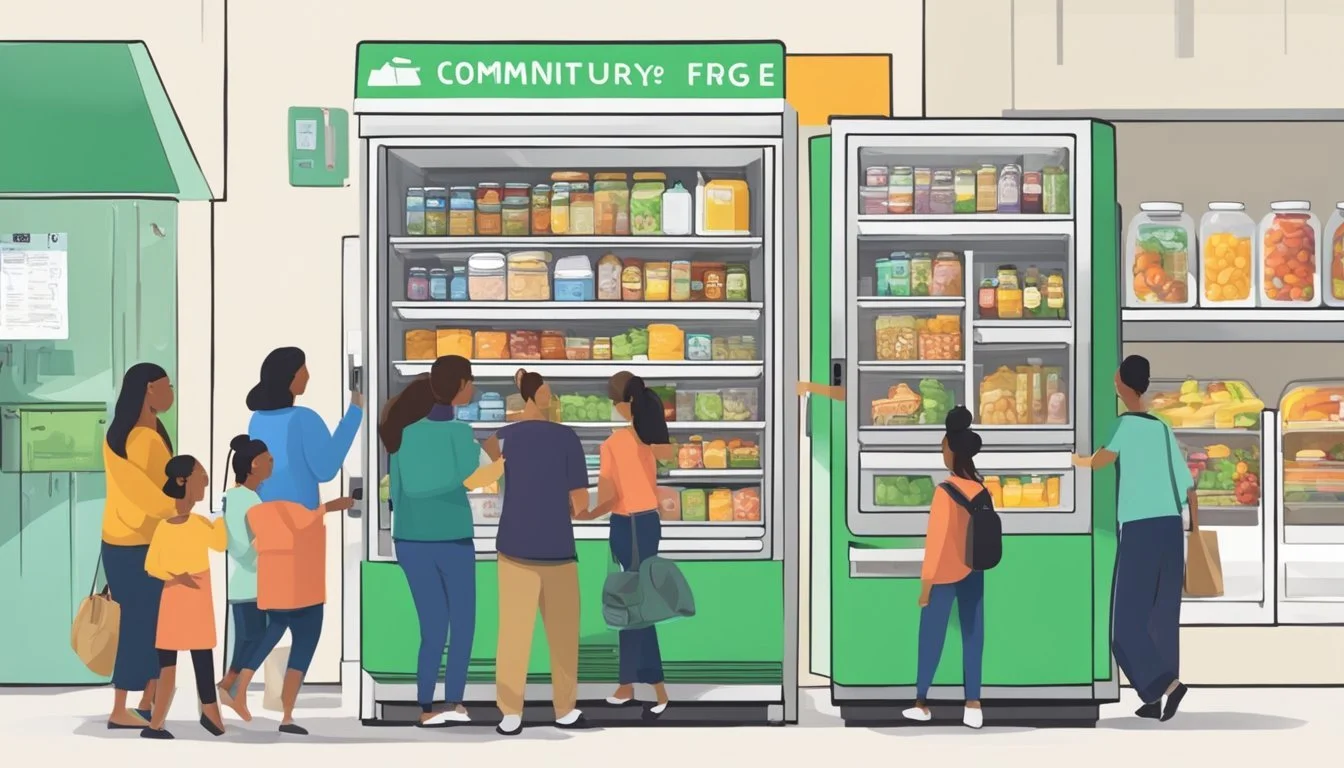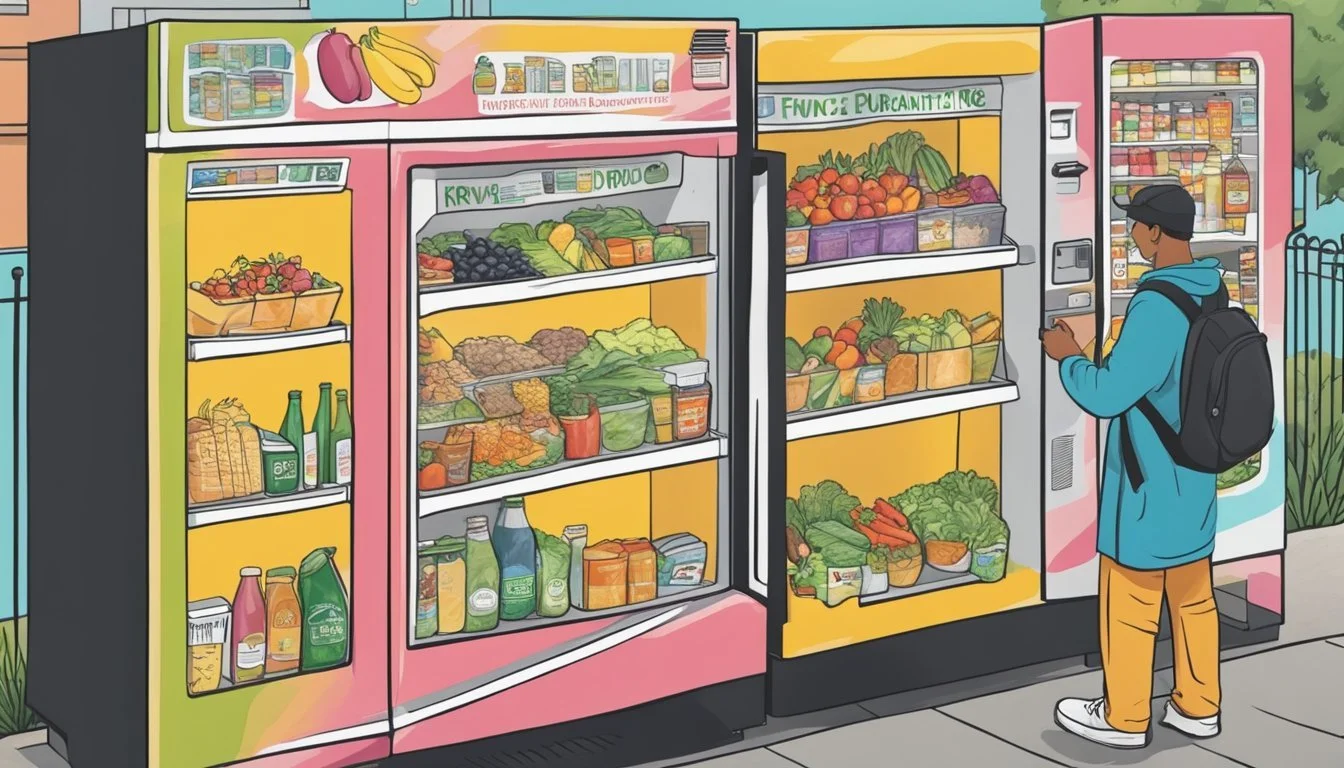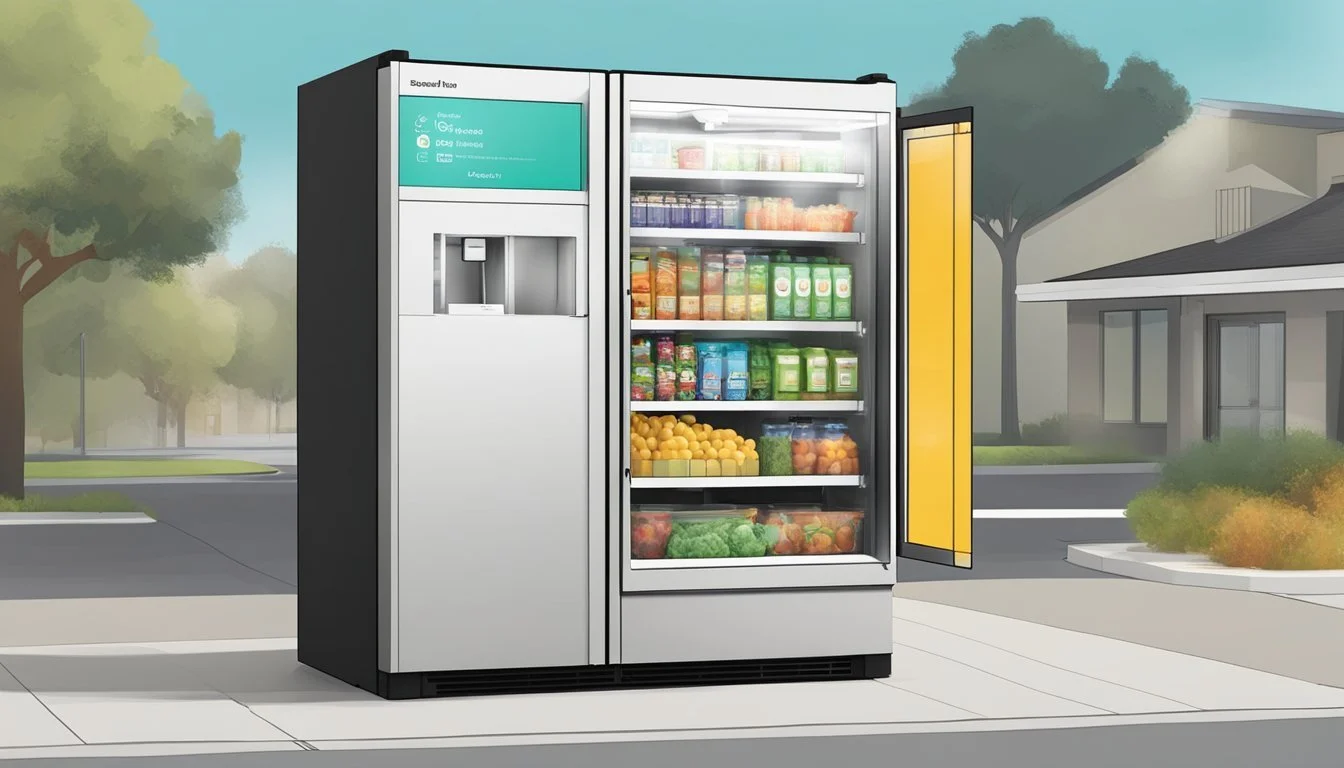Irvine, CA Community Fridge
Tackling Food Insecurity with Local Initiatives
In Irvine, California, a city known for its planned neighborhoods and abundant green spaces, community fridges serve as an innovative solution to food wastage and hunger. These communal refrigerators are placed in accessible locations, allowing residents to leave surplus food and for others in need to take what they can use, free of charge. This initiative not only fosters community spirit but also plays a crucial role in addressing food insecurity, a challenge that affects communities nationwide.
The concept of the community fridge is steadily gaining popularity across various cities, with Irvine joining this compassionate movement. These fridges offer a unique platform for residents to contribute to the welfare of their neighbors, supporting the underlying ethos of sustainability and mutual aid. By encouraging food sharing, Irvine’s community fridge project aligns with the city's forward-thinking and environmentally conscious image.
Available data and online discussions indicate there may be existing and emerging locations for community fridges within Orange County. Residents of Irvine are invited to participate in this endeavor, reducing waste and helping fellow community members access fresh, nutritious food. This system depends on the solidarity and continuous participation of the locals to thrive and sustain its beneficial impact on the city.
Overview of Community Fridges
Community fridges are collaborative efforts that aim to address food insecurity through the sharing of resources. They operate as public amenities providing free access to food items for anyone in need.
Purpose of Community Frididges
Community fridges serve a dual purpose:
Alleviating Food Insecurity: They are established to offer immediate relief from hunger by providing free and accessible food to those who face financial hardships.
Reducing Food Waste: By allowing individuals and businesses to donate surplus edible items, community fridges help in minimizing food waste.
Growth During the Coronavirus Pandemic
Surge in Numbers: The onset of the coronavirus pandemic saw an expansion in the number of community fridges as the crisis drastically increased food insecurity.
Adaptation to New Norms: They adapted to pandemic-related health guidelines, ensuring safe access to food despite unprecedented challenges.
Irvine, CA's Approach to Community Fridges
In Irvine, California, the deployment of community fridges is an innovative approach to simultaneously address issues of hunger and food wastage.
Local Impact
The community fridges in Irvine serve as a public resource where residents have access to free food, specifically aimed at reducing food insecurity. The fridges are stocked with various food items such as prepared meals and leftovers, making it easier for those in need to obtain sustenance without any cost. This initiative also plays a crucial role in minimizing food waste by providing a place where surplus food can be shared rather than discarded.
Partnerships with Organizations
The success of the community fridge initiative in Irvine is strengthened through partnerships with local organizations. Second Harvest Food Bank has been instrumental in providing food supplies to stock these fridges. By organizing food drives and donations, Second Harvest Food Bank and similar organizations ensure a continuous supply of food items for the community fridges, thereby increasing the resilience of these support systems in Irvine.
Starting a Community Fridge in Irvine
Initiating a community fridge in Irvine requires meticulous planning, community engagement, and a sustainable approach to management. This endeavor is a collaborative effort to combat food wastage and support those in need.
Planning and Resources
Before one starts a community fridge in Irvine, it's important to identify suitable locations that are easily accessible and have high foot traffic. Ideal spots include public parks, community centers, or near local businesses that are willing to partner in the initiative. Securing resources is another critical step, which includes obtaining a fridge, ensuring a power source is available, and estimating potential costs, like the approximately $150 in annual electricity expenses, resembling Atlanta's community fridge costs.
Checklist for Resources:
Fridge unit
Reliable electricity source
Regular food donations
Maintenance supplies
Engaging with the Community
Success hinges on community involvement. Organizers should reach out to local residents, businesses, and organizations to garner support. They could form a community group to help manage the project and create a self-sustaining system. Additionally, local authorities and neighborhood members should be informed to align with city regulations and gain further backing.
Steps to Engage the Community:
Inform local authorities and gain necessary permissions
Create social media channels and local flyers to spread awareness
Partner with local businesses and charities for support and donations
Ongoing Management
To ensure the longevity of a community fridge, a dedicated team should oversee ongoing management. This involves regular cleaning, ensuring food safety standards are met, and tracking food stocks. The ease of donating and retrieving food should be emphasized to keep the freedge functional and helpful to the community.
Management Essentials:
Schedule for cleaning and maintenance
Coordination team for food stocking and safety checks
Communication plan for updates to the community on fridge status
Addressing Food Waste
In Irvine, California, innovative strategies like community fridges are being deployed to reduce food waste and provide direct benefits to the community.
Community Fridges as a Solution
Community fridges are a grassroots solution to the pervasive issue of food waste. These publicly accessible refrigerators allow residents and businesses to leave surplus food, which then becomes available to those in need. In Irvine, these fridges operate under the principle of take what you need, leave what you can, ensuring a continuous cycle of food sharing. By acting as a decentralized food redistribution point, community fridges help to divert waste from landfills where food would otherwise contribute to greenhouse gas emissions.
Accessibility: Community fridges are placed in accessible locations, facilitating easy contributions and retrievals.
Ease of Use: They offer a straightforward way for individuals to share surplus food without complicated procedures.
Benefits to the Irvine Community
The introduction of community fridges in Irvine presents a range of benefits. Firstly, it directly confronts the issue of food insecurity, allowing individuals facing economic hardships to access fresh food at no cost. It also engenders a sense of community solidarity, with residents aiding one another through shared resources.
Reduced Waste: Significant amounts of edible food are rescued, mitigating the volume of waste produced.
Environmental Impact: Fewer food in landfills lowers methane emissions, contributing to the city's sustainability goals.
By implementing community fridges, Irvine demonstrates its commitment to pioneering methods that address food waste while simultaneously providing tangible support to its residents.
Locations of Community Fridges in Irvine
Irvine, California, maintains a network of community fridges that offer free food to those in need, fostering community sharing and sustainability. These fridges are placed in accessible public locations and are regularly stocked with perishable and non-perishable items.
UC Irvine Campus: The student-led initiative at UC Irvine often operates a fridge for both students and community members, providing a variety of food options.
Local Community Centers: Several community centers in Irvine have been known to host community fridges. These are typically managed by local non-profits or community groups.
Faith-Based Locations: Churches and other faith-based organizations in Irvine also offer community fridge programs. Their addresses and operating hours can vary, and they welcome donations and visitors.
For the most up-to-date information on specific fridge locations, operating hours, and guidelines, residents are encouraged to consult local resources such as the city's official website or community bulletins. Interested individuals can contribute by donating food or volunteering to maintain the fridges.
Maintenance and Care of Community Fridges
Proper maintenance and care are essential for the longevity and effectiveness of community refrigerators. They rely on regular oversight for daily operations and the occasional professional servicing to remain in optimal condition.
Daily Operations
Community fridges must be attended to regularly to ensure they are running efficiently and safely. A typical daily checklist for volunteers or staff might include:
Visual Inspections: Check for any apparent signs of wear, damage, or tampering.
Temperature Monitoring: Ensure the fridge is maintaining a consistent temperature to keep food safe.
Cleanliness: Sanitize all surfaces including handles and shelves to meet health and safety standards.
Stock Rotation: Remove old or expired items and organize the fridge to maximize space and accessibility.
Each of these tasks is vital to the day-to-day success of a community fridge, making certain it serves its intended purpose without interruption.
Hiring for Appliance Repair
When a community fridge requires professional attention, it is important to hire skilled appliance repair services. Here are some tips for hiring:
Certifications and Experience: Look for repair services like Royal Appliance Services that are certified and have a proven track record with refrigerators.
Promptness and Reliability: Choose services known for timely responses and dependable repairs.
Cost Estimation: Seek up-front pricing and compare quotes to avoid unexpected expenses.
Remember, investing in timely repairs can often extend the refrigerator's life, potentially saving costs from having to replace it prematurely.
Frequently Asked Questions
The Frequently Asked Questions section offers practical information on establishing, contributing to, and maintaining food safety standards for the Irvine, CA Community Fridge.
Starting Up
To start a community fridge in Irvine, a group or individual needs to consider location logistics, secure a fridge and possibly a freezer, and coordinate with city health regulations. It is essential to establish a routine for maintenance and cleaning schedules for the long-term success of the initiative.
Donation Guidelines
When donating to the community fridge, individuals should follow specific guidelines to ensure quality and safety:
Acceptable foods: non-perishable items, fresh produce, bread, and unopened pasteurized milk and yogurt.
Items not accepted: raw meat, opened containers, homemade meals, alcohol, and expired products.
Eggs: can be donated if they are fresh and kept within the designated shelf or drawer in the fridge.
Freezer: If available, is suitable for frozen meals and ice packs contributions, ensuring they are properly packaged and labeled.
Food Safety
Food safety is paramount for a community fridge. All items must be checked for expiration dates, and the fridge must operate at safe temperatures:
Fridge temperature: should be at or below 40°F (4°C).
Freezer temperature: should maintain 0°F (-18°C) or lower.
Regular cleaning and sanitization is imperative to prevent foodborne illnesses.
Financial Aspects of Community Fridges
Community fridges in Irvine, CA, like others, face various financial considerations. These range from initial fundraising efforts for setup to ongoing operational expenses. Managing these finances efficiently and transparently is critical for the sustainability of such community-led initiatives.
Fundraising Initiatives
When looking to start a community fridge, the first financial hurdle is acquiring the necessary funds. Initiatives in cities like Irvine typically involve:
Crowdfunding Campaigns: Online platforms such as GoFundMe are utilized to raise capital from the broader community.
Local Business Sponsorships: Partnerships with local businesses can result in sponsorships where businesses provide funds or necessary items like the fridge itself.
Grants: Non-profit organizations can sometimes secure grants from both governmental bodies and private foundations dedicated to community development or food security programs.
Donations of Goods and Services: Besides monetary contributions, the community often donates essential services, such as the installation and the fridge unit itself, which can significantly offset startup costs.
Operational Costs
The operational costs of maintaining community fridges do not end once the fridge is up and running. They include:
Energy Bills: Refrigerators operate 24/7, thus electricity costs are a constant expense.
Maintenance: Regular cleaning and repairs ensure the fridge remains in good working condition.
Food Safety: Some resources are allocated towards ensuring the donated food complies with safety standards.
Volunteer Coordination: Community fridges rely on volunteers and sometimes need to invest in volunteer management tools.
Each fridge location can differ, but the core financial concerns revolve around ensuring the consistent and safe operation of the service for community benefit.
Local Participation and Volunteering
Engaging with local community fridges in Irvine, CA, depends on the collective efforts of individuals and groups. They provide a unique opportunity for members of the community to contribute towards reducing food waste and supporting neighbors in need.
How to Get Involved
Identify Opportunities: Residents can explore several avenues to volunteer. Irvine offers programs through organizations like Volunteer Match, which connects individuals with local community-based initiatives.
Regular Commitment: Those interested in consistent involvement should plan to dedicate a few hours each week. For example, Irvine Senior Services requests volunteers to commit to a minimum of three hours weekly for at least six months.
Organizing Community Events
Starting a Fridge: Establishing a new community fridge requires understanding the associated costs, such as annual electricity, which could be around $150.
Food Distribution: Community members can participate by helping to sort, stock, and distribute food. The Families Forward program indicates that most volunteering happens during regular business hours, providing structured time slots for involvement.
Reviews and Feedback on Irvine Community Fridges
Community fridges in Irvine, CA, commonly referred to as freedges, have garnered attention for their role in community support and food sharing. Reviews from various sources like Yelp and community forums provide insights into their impact.
Feedback from users indicates that these communal resources are appreciated for their accessibility and the support they offer to both those in need and those looking to reduce food waste. One user mentioned the convenience of these fridges being placed in frequently visited spots, making it easy for individuals to leave or take food.
User Experiences with Community Fridges:
Positive remarks on the cleanliness and organization of the fridges.
Commendation for the variety of food available, including prepared meals and surplus produce.
Appreciation for the sense of community fostered through the sharing of resources.
Challenges Noted by Users:
Occasional reports of fridges being low on supplies.
Concerns over the maintenance and long-term sustainability of the fridges.
Local Impact:
Benefited individuals struggling with food insecurity.
Encouraged residents to participate in local food-sharing initiatives.
On Yelp, service providers, including fridge repair and appliance services, are also reviewed, indicating a well-supported infrastructure for maintaining these community resources in good condition.
Residents generally seem to support the idea of community fridges and their dual role in fighting hunger and climate change by saving good food from being discarded. The underlying concept aligns with Irvine's community values of sharing and sustainability.
Technological Integration
In the context of the Irvine Community Fridge project, technology plays a pivotal role in boosting visibility and accessibility. Through concerted efforts in digital spaces, they ensure information is widely disseminated and fridges are easy to locate.
Social Media and Awareness
Social media is integral to the Irvine Community Fridge initiative. The project utilizes platforms like Instagram and Facebook to raise awareness and encourage community engagement. They post updates on food stock levels, new fridge locations, and volunteer opportunities regularly. Visual content, such as photos of the stocked fridges and involved volunteers, helps to connect with the local community and inspire action.
Online Directories and Apps
To assist individuals in finding the nearest community fridge, online directories and mobile apps play a crucial role. The project is listed on Freedge, a comprehensive online database maintaining a map of community fridge locations worldwide. With intuitive design and real-time updates, these technological resources simplify the search for a nearby Irvine Community Fridge, making the assistance more accessible to those in need.



